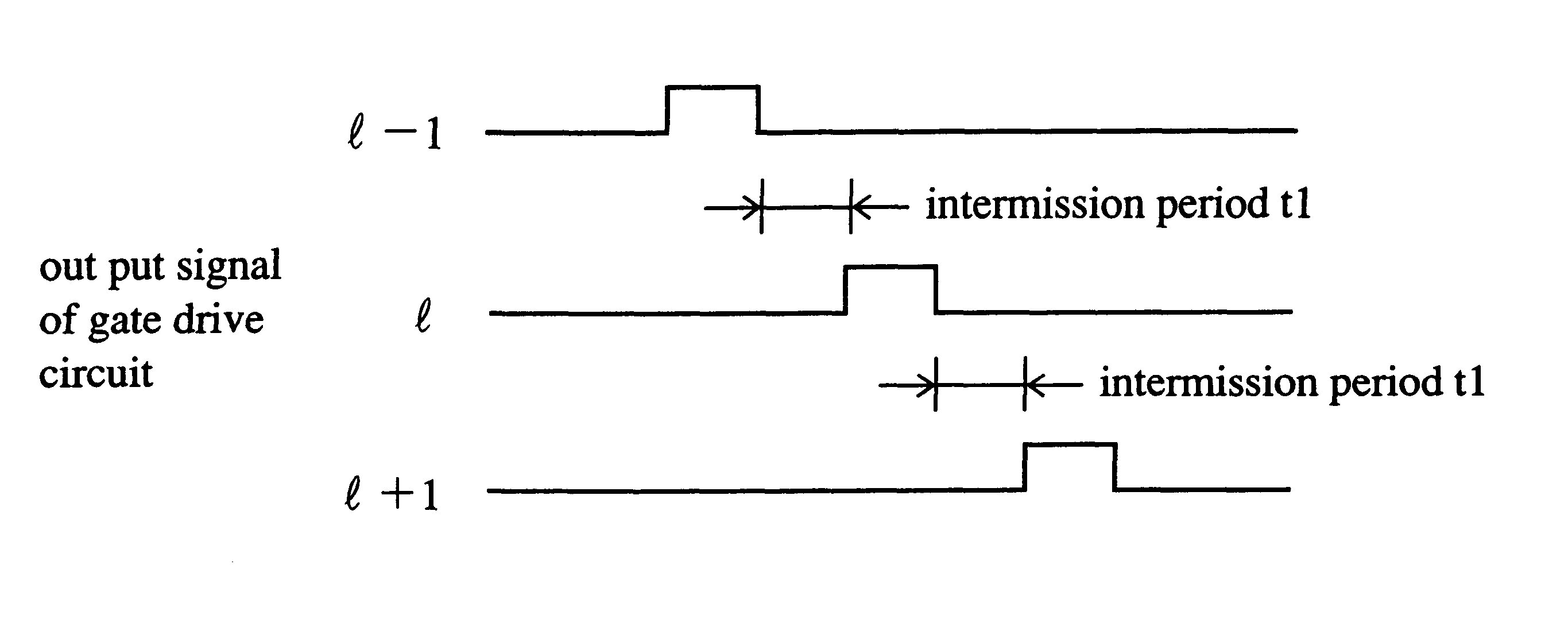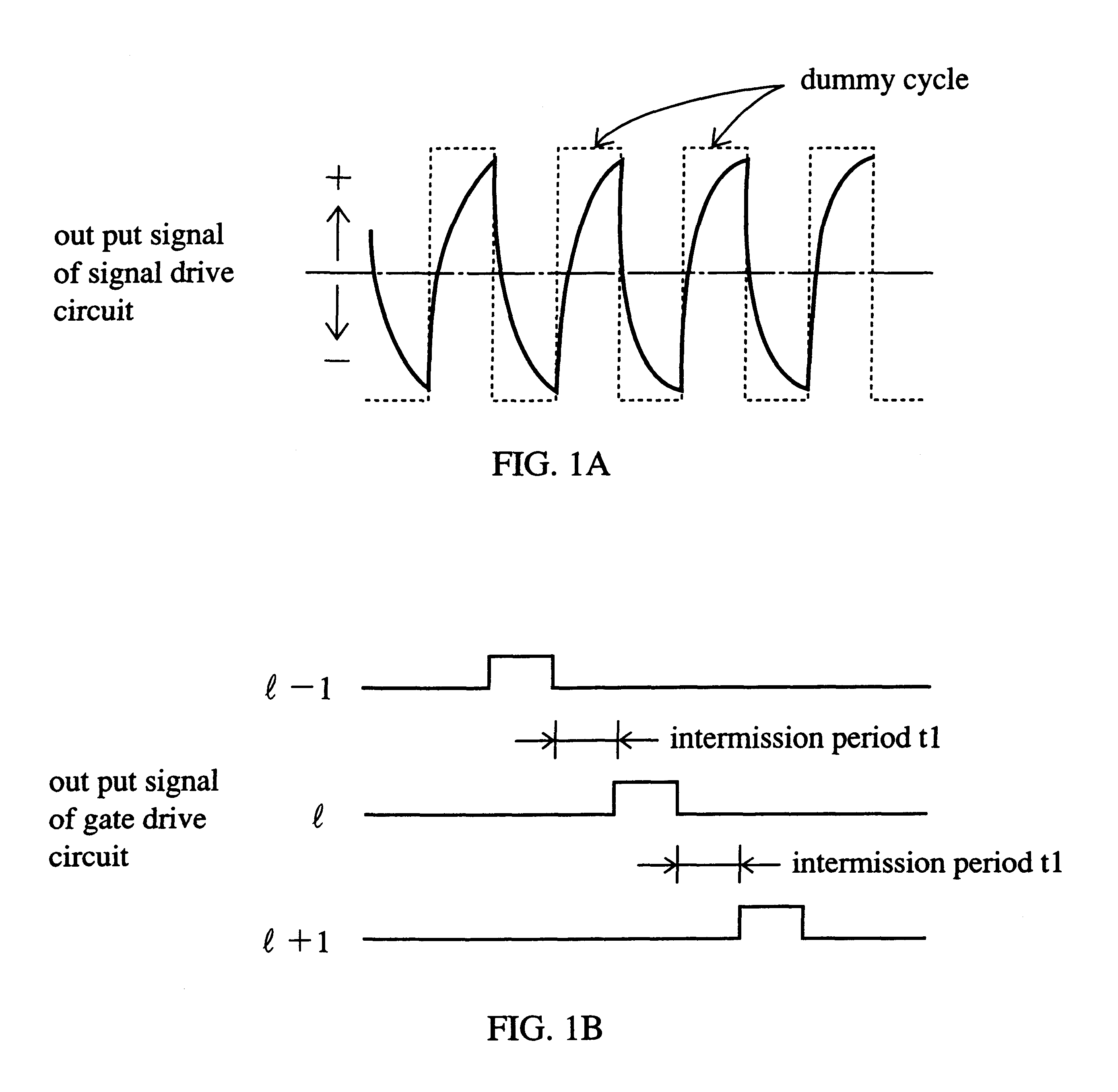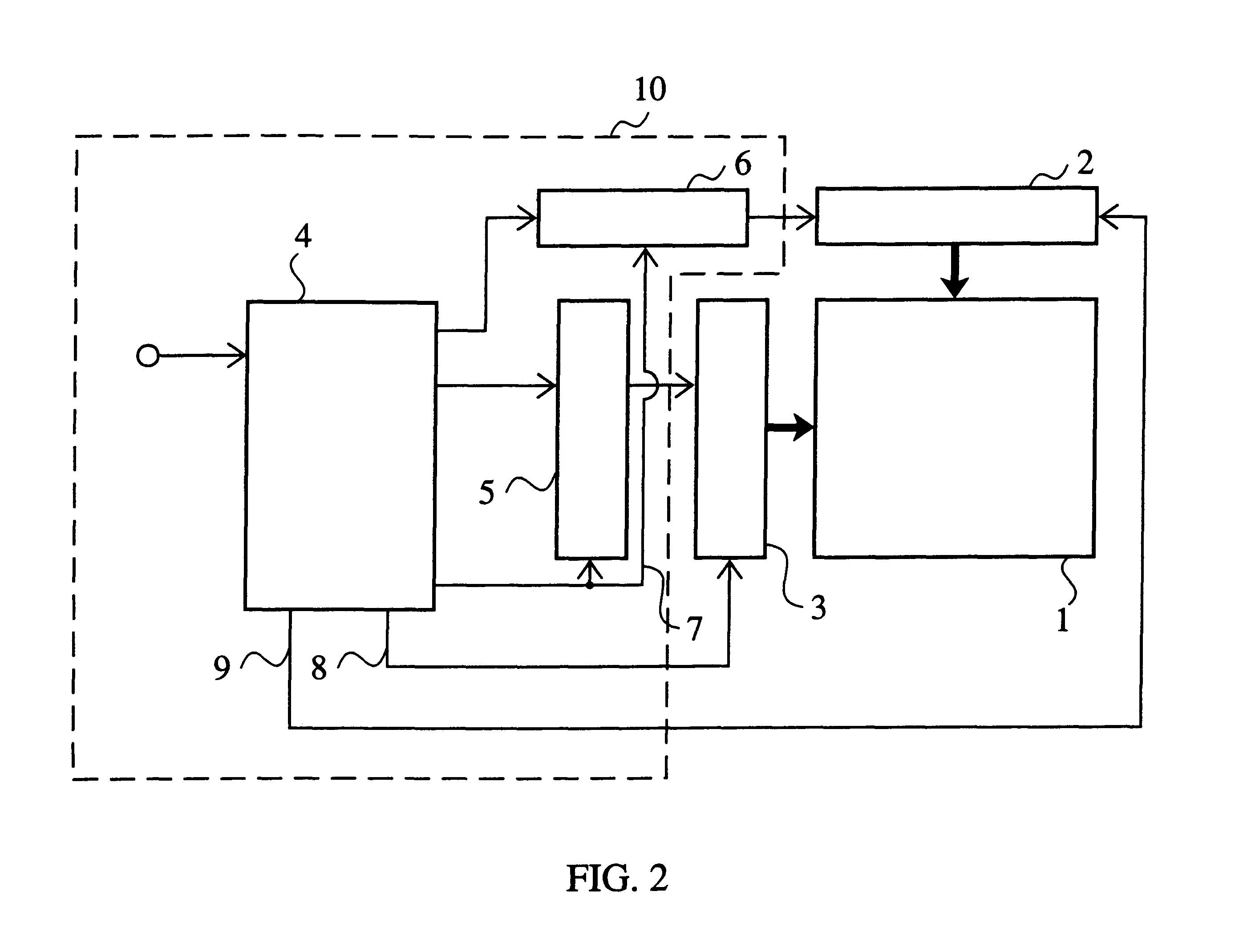Liquid crystal display device
a display device and liquid crystal technology, applied in the direction of instruments, static indicating devices, etc., can solve the problems of waveform distortion, improper luminance increase or decrease, flicker on the display screen,
- Summary
- Abstract
- Description
- Claims
- Application Information
AI Technical Summary
Problems solved by technology
Method used
Image
Examples
first embodiment
FIG. 1 shows signal waveforms according to the invention. Specifically, FIG. 1A shows an output signal of a signal line driver and FIG. 1B shows output signals of a scanning line driver (i.e., gate driver). While conventionally write periods for the lth line for which the polarity is changed from the preceding field and for the lines before and after it, that is, the (l-1)th and (l+1)th lines, are continuous, in this embodiment intermission periods t1 are inserted in between. By virtue of the inserted intermission periods t1 and inverted signals (dummy cycles) for quasi-polarity-inverted driving, there occurs no increase in signal amplitude corresponding to .DELTA.Vsig [V] that conventionally occurs between the lth line (polarity inversion line) and the (l+1)th line. In other words, by inserting the dummy cycles, the writing of display signals to the pixel electrodes the lth line (polarity inversion line) and the (l+1)th line can be performed by using stable output signals of a sign...
embodiment 2
FIGS. 5A and 5B show a signal line driver output signal and scanning line driver output signals, respectively, according to a second embodiment of the invention. The components in the second embodiment that are same as the corresponding components in the first embodiment are given the same reference numerals as in the latter and will not be described in detail. In this liquid crystal display device, as shown in FIG. 5A, display signals that are written to the pixel electrodes have a waveform in which the polarity is continuous, that is, is not inverted, for all scanning lines except one scanning line per field. An intermission period t2 is inserted after the lth line (polarity inversion line). Since the period T of the polarity inversion is larger than the time constant .tau. of the output impedance R of the signal line driver and the parasitic capacitance C of a signal line, writing is started when the voltage of the output signal of the signal line driver has reached a value havin...
embodiment 3
FIGS. 8A and 8B show signal waveforms according to a third embodiment of the invention. This embodiment is much different from the first embodiment in that an antiferroelectric liquid crystal (AFLC) is used as a liquid crystal material. This embodiment is the same as the first embodiment in that a dummy cycle is inserted before writing for the (l+1)th line that is next to the lth line (polarity inversion line) to thereby stabilize the waveform of an output signal of the signal line driver before the writing for the (l+1)th line. However, the write time for the lth line is set longer than in the first embodiment, because in the case of an antiferroelectric or ferroelectric liquid crystal large depolarization current flows at the time of polarity inversion and a resulting reduction in pixel potential may cause insufficient writing.
In the drive waveforms shown in FIGS. 8A and 8B, the write time for the lth line (polarity inversion line) is set longer than for the other lines. By perfor...
PUM
| Property | Measurement | Unit |
|---|---|---|
| display voltage | aaaaa | aaaaa |
| voltages | aaaaa | aaaaa |
| polarities | aaaaa | aaaaa |
Abstract
Description
Claims
Application Information
 Login to View More
Login to View More - R&D
- Intellectual Property
- Life Sciences
- Materials
- Tech Scout
- Unparalleled Data Quality
- Higher Quality Content
- 60% Fewer Hallucinations
Browse by: Latest US Patents, China's latest patents, Technical Efficacy Thesaurus, Application Domain, Technology Topic, Popular Technical Reports.
© 2025 PatSnap. All rights reserved.Legal|Privacy policy|Modern Slavery Act Transparency Statement|Sitemap|About US| Contact US: help@patsnap.com



